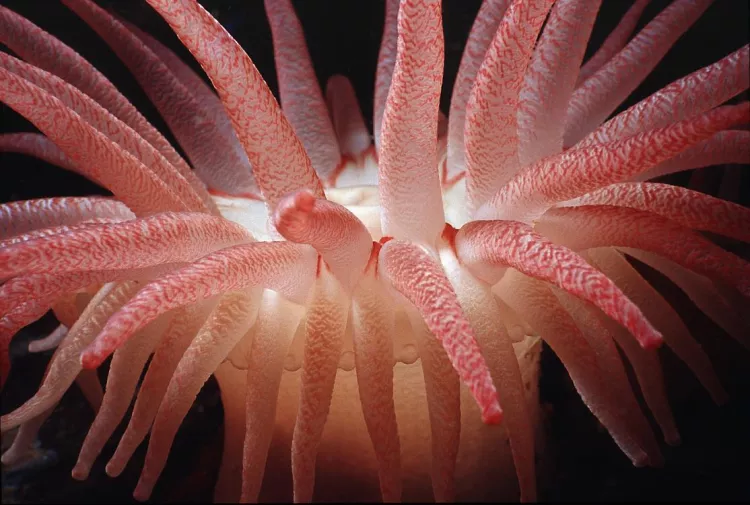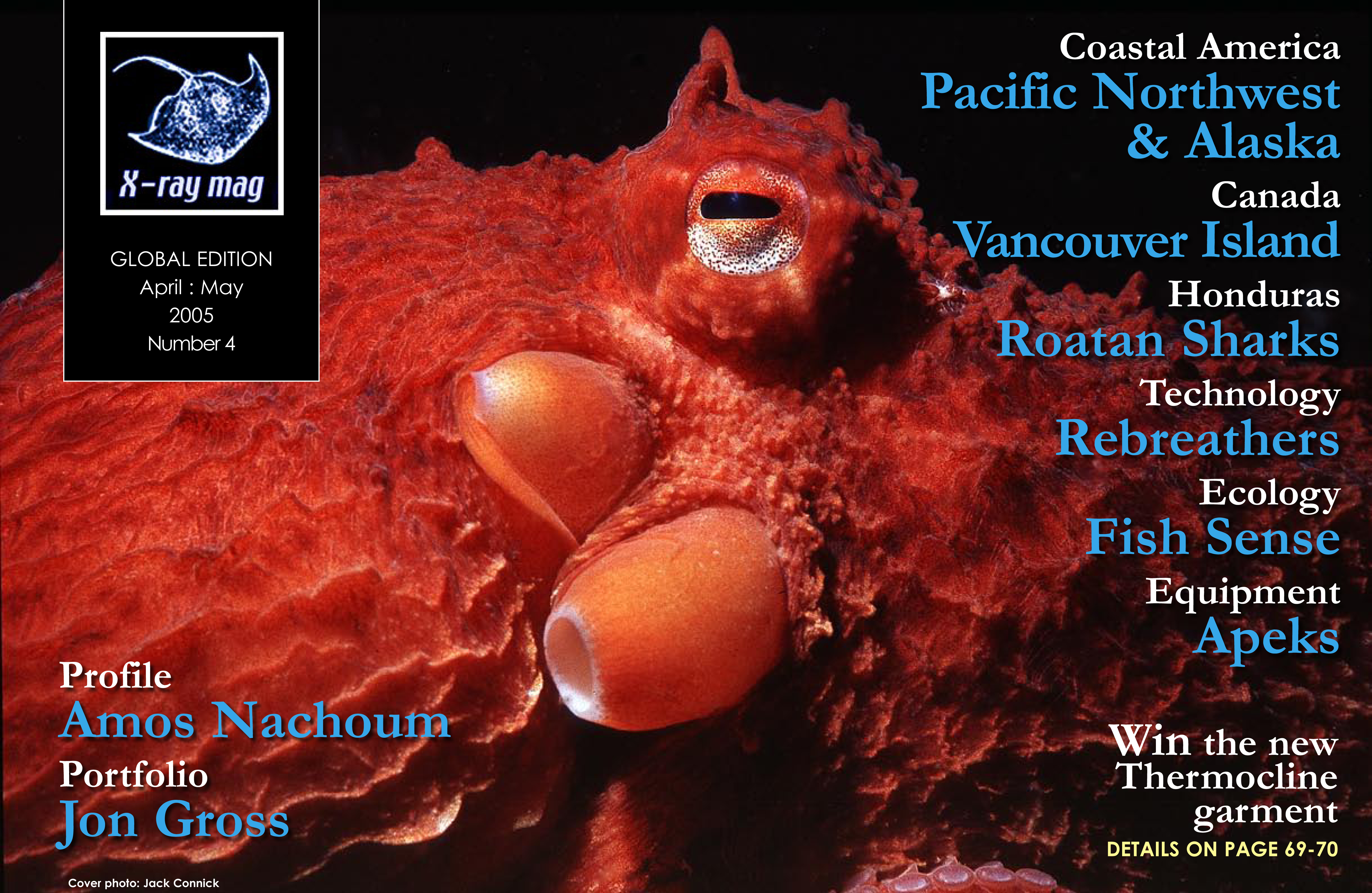What wonderfully brilliant red colors one can find in the underwater realm, especially in the Pacific Northwest regions of North America. Why are these marine species so red? How do they get that color? What purpose does it serve? As in many cases in nature, it comes down to simple survival.
Contributed by
What creatures eat can dictate how they appear. In the case of the sea anemone Actinia, it relies on algae for its nutrition. Algae comes in various colors including red. What give algae, and hence the anemone that consumes the algae, its red color is a substance called carotenoids.
Carotenoids are a widely distributed group of natural occurring lipid-soluble pigments that are primarily produced within algae, plants, and phytoplankton. They are responsible for the brilliant colors found in nature such as yellow, orange, and red colors of fruits, leaves, and aquatic animals. Although many organisms can synthesize carotenoids, they cannot produce them on their own. Carotenoids must be absorbed in an animal’s diet and then into the animal’s tissues. Some fish species such as koi and various crustaceans process carotenoids. The Southern Kelp Crab (Taliepus) feeds on seaweeds and kelp. It converts the beta-carotene and xanthophylls it ingests into astaxanthin, a form of carotenoid, which is then stored in its exoskeleton, hence the crab appears bright red.
Marine animals must constantly consume a source of carotenoids to maintain their pigmentation, otherwise they lose their red color. This is because carotenoids have metabolic turnover and must be supplied in the diet to be maintained in the animals. Interiors of underwater caves are covered with invertebrate life including aggregation anemones, hydrocoral and colorful sponges. In some caves, there are also a lot of snow-white, giant green anemones. It is the absence of sunlight in these caves that causes the anemones to lose the symbiotic algae that normally gives color to them, and so they return to a white color.
Almost all red algae live in marine habitats, even though some species are found in damp soil or fresh water. Many types of seaweed typically found growing along the North American coasts are red algae. Another species of algae called coralline algae, is an important member of the coral reefs. Its cell walls become hardened with calcium carbonate, thereby producing new material and cementing together other organisms which build the reefs.
Algae require light to synthesize food. Red algae, which is found in warm coastal waters and in water as deep as 260 m (850 ft), has adapted to varied water depths by having different proportions of pigments. Chlorophyll is their primary pigment, which is green. They have a secondary pigment, phycoerythrin, which produces their red color, that can absorb blue light, which penetrates to greater depths underwater than other colors of light. In deep waters, red algae can appear almost black due to the large amount of phycoerythrin, but in the shallows, red algae appears green as there is not enough phycoerythrin to mask the green of the chlorophyll.
Protection
Let’s suppose you are a bright red octopus. What emotion do you suppose you are exhibiting? Bright colors such as red and yellow in many marine animals are described by experts as warning coloration. This type of coloration is not intended to camouflage the animal, but to make it stand out. The bright color lets their predators or neighbors know that they are not to be antagonized. Some creatures are born with bright colors while others, like the octopus, can change colors depending on reactions to a situation.
Intimidation through color is also used when an organism wants to advertise that it is poisonous. The fire sponge, for instance, displays a bright red. It has toxins in its spicules.
Camouflage
Creatures that live on the reef have adapted to the reefs environment. One survival scheme used by many animals is camouflage. If you can’t see me, you can’t eat me! So, species have evolved to display the colors of their homes, and in the case of many reef fishes and crustaceans such as shrimp, that color is red. Look more closely at red corals and kelp next time you go diving, you may discover that there is more life on that innocent looking sponge than you first thought.
Properties of water
There is one more factor that plays an important role in the issue of color underwater. George Campbell, an underwater dive instructor and photographer at Deep Six in New Paltz, New York state, said in his guide, Diving with Deep Six, that water acts as a selective filter. White light is made up of a spectrum of colors from deep red, to orange, yellow, green, blue and deep violet.
As white light passes through a thousand feet (333 m) of water, various colors of its spectrum are gradually filtered out selectively, one-by-one. For example, most of the red, some orange and some yellow are gone from the light after 3 m (10 ft). At 8 m (25 ft), most of the orange is gone. At 11 m (35 ft), most of the yellow is gone. This continues throughout the spectrum until the only color left is violet light, which fades out after several more meters. So, at a depth of 333 m (1000 ft), there would be little or no light at all.
So, if red disappears at depth, does this mean that creatures that are red also disappear? Is this, yet, another survival tactic perhaps? Be invisible, then nobody will eat you. But how do we know which predators can see red under water? Perhaps, these red species are banking on a theory that many underwater creatures cannot see color, only light and dark shades. In that case, red, which transforms to grey on the shade scale, would cause an animal to “disappear” in the murky depths where only strong shades (blacks and whites) show up.
Selective filtration in the underwater realm creates conditions that make diving interesting. Taking a photograph at 10 m (30 ft) would result in most objects appearing green, blue, violet, or black. Taking the same photograph with a flash (white light) would reveal surprising colors that could not have been seen by the diver without a visual aid. So, be sure to carry a flashlight with you when you are scuba diving. Even a small light will reveal brilliant colors that would have gone unnoticed without a torch! ■
Published in
-
X-Ray Mag #4
- Read more about X-Ray Mag #4
- Log in to post comments























































